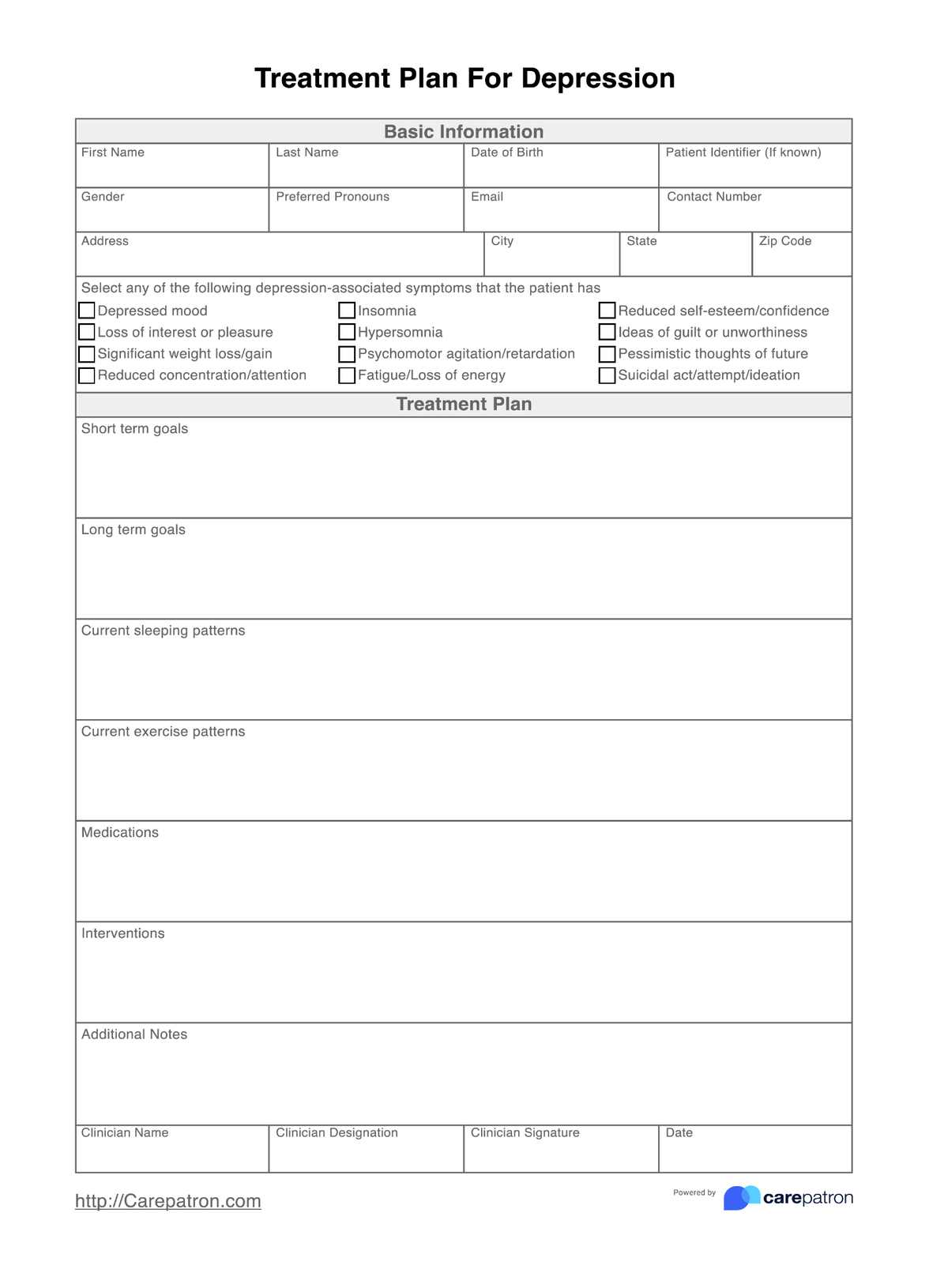The answer to this question is entirely dependent on the patient. Some patients make faster progress than others, and so may require a new treatment plan with each session, whereas others may face greater struggles in their progress. Sometimes, simple adjustments or amendments may be needed, whereas a new plan may be required in other instances. It's up to you whether you would like to start each session with a new plan, or if you prefer to keep the original and make necessary adjustments according to the patient's progress. Sometimes, no new plan or adjustments are needed.

Treatment Plan For Depression
Access our treatment plan for depression to alleviate patient depressive symptoms and work towards achieving greater psychological well-being. Increase daily functioning in patients, as well as healthy thoughts, feelings, and positive behaviors.
Treatment Plan For Depression Template
Commonly asked questions
This differs in each mental health practice, with each practitioner having their own preferences as to how they approach treatment. However, our treatment plan is designed to be used generally, with the option to be specifically altered to meet the particular needs of your practice.
A humanistic treatment plan sometimes referred to as an ethical treatment plan, is one that is designed ethically and with the needs of your patient in mind. It involves collaboration with the patient and considers their preferences, concerns, and well-being. In many cases, especially when it comes to depression, the success of improvement is dependent on whether the patient wants to get better. As a result, it is important that you discuss options with the patient, and work towards not only what is best for them, but what they perceive to be achievable. Patients are capable of making the right choices, with plans reflecting the patient’s self and their goals.
EHR and practice management software
Get started for free
*No credit card required
Free
$0/usd
Unlimited clients
Telehealth
1GB of storage
Client portal text
Automated billing and online payments











